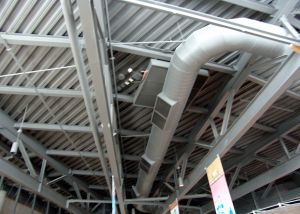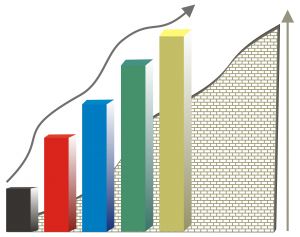Hello all,
Here we go again with another post on the latest in global economics, composites and polymers while chipping in occasionally with tidbits on entertainment and sports. A truncated February has been the prime reason for deferring the publication of this post.
RESHAPING THE WORLD
The impact of GDP growth of nations on the composites industry in the respective countries has never been so obvious since the beginning of the global economic downturn in 2009. Questions abound on whether regions/countries have hit the bottom of the “U” and there is an uptick in the economy. While experts continue to be flummoxed at times by conflicting reports on the health of the Chinese economy (the debate is unending), the U.S., UK and Germany continue to forge ahead with bright 2014 prospects.
The theme of the 2014 World Economic Forum meet in late January in Davos was aptly “Reshaping the World”. Leaders recognized the skills of nations to navigate the complexity and interconnectivity of the changing world, with profound political, economic, social and technological forces shaping our lives. There could not have been a better way to succintly sum up the global scenario. A discerning feature was the U.S. vs. Europe competitiveness on the energy front with the former being adjudged the clear winner much to the dispirit of the Europeans [CNBC]. The American euphoria could perhaps be short-lived if one were to go by reports of the recent shale gas exploration success in the UK – not a real match in terms of barrels per day of oil or cubic feet of natural gas, but still a significant step.
For those who followed the Sochi 2014 Winter Olympics, the (healthy) U.S.- European rivalry was all too obvious, driven largely by sportsmanship and adrenalin pumping (will to win) !
THINWALLING – THE NORM
Automotive instrument panel retainers in composites have been around for more than a decade. However, developments never cease in making parts thinner and lighter. An injection-molded thinwall instrument panel retainer in the 2014 Chrysler Jeep Cherokee is reportedly the industry’s first to attain 2.0mm thickness employing long glass fiber reinforced polypropylene (PP) with a 30% fiber loading. The part is reportedly 27% lighter than the previous talc-filled PP version (2.5 to 4.0mm thickness). Thinwalling enabled a cycle time reduction of approximately 30% versus the conventional 3.0mm thick part due to faster cooling time and a nominal cost reduction. Advanced fiber orientation was employed in the design of the new part to properly set up the injection mold for warpage mitigation [Plastics Today].
Lightweighting has almost become a fetish in the automotive industry and the collaborative efforts of OEMs, fiber producers and machinery manufacturers continue to reap rich dividends.
Another recent development has been a weight-optimized commercial vehicle storage compartment flap with a 70% uni-directional glass fiber reinforced PP tape. The thermoplastic tape laying method provides outstanding mechanical properties, resilience and ability to form complex shapes apart from reducing waste and cost. Yet another automotive development has been an injection-molded glass fiber reinforced polyphenylene sulfide (PPS) head-up display that shows important information directly at the driver’s eye level. This rigid, temperature-resistant material features high dimensional stability and low warpage, enabling very low tolerances that allow precise dimensions for various components. The components of a head-up display-case bearing housings, the optical rail and mirror holder should not change shape even slightly, that makes the reinforced PPS an ideal material for this application [Plastics Today].
CARBON FIBER – ALL THE WAY
It was mostly about carbon fiber composites at the January 2014 Detroit Auto Show. The auto industry’s carbon fiber dreams are increasingly making it to the street. GM and BMW introduced cars at the show that use more CFRP than their previous models [Plastics News]. The Chevrolet Corvette Z 06 has a standard removable carbon fiber roof panel enabling drivers the luxury of an open air option without losing their composite cover. This is a follow up on the 2013 Corvette Stingray with a carbon fiber hood and fixed roof. BMWs new M3 sedan and M4 coupe both have carbon fiber roof systems with potential weight reduction of 80kgs in each model. Toyota’s FT-1 concept car utilizes a carbon fiber exterior door panel made in a single step in one large mold. The large one-piece hood swoops down for a split front end with exposed carbon fiber trim that skims over the surface. Nissan’s Q50 Eau Rouge concept luxury car utilizes aerodynamics for the carbon fiber exterior trim. The curving capabilities available through molding is used to funnel passing air directly where it is needed to cool the rear brakes of the sports car.
Another way to reduce drag co-efficient and improve fuel economy, apart from conventional weight reduction techniques.
NEXT-SHORING IS THE NEW TREND
Demand for manufactured goods in emerging markets is surging and fragmenting, as factory costs shift technological advances with more powerful robotics and the internet creating a new range of opportunities for manufacturers to digitize operations. Manufacturing strategies built on labor-cost arbitrage are becoming outmoded. The race is on to get ahead of what comes next. The new trend is to place greater emphasis on proximity to both demand and innovation while making location decisions that balance economies of scale against the growing diversity of tastes within and across global markets. First it was offshoring (arbitrage labor costs by using low-wage workers in developing nations). Then came reshoring -return of manufacturing to developed markets as wages rose in emerging nations. The latest mantra is next-shoring, which places emphasis on proximity to demand and proximity to innovation. Both are crucial in a world where evolving demand from new markets places a premium on the ability to adapt products to different regions. Next-shoring strategies encompass a diverse and agile set of production locations, a rich orientation of innovation-centered partnerships and a strong focus on technical skills [Mckinsey].
Recent examples from an array ? Toray’s latest announcement on plans to invest in a new carbon fiber integrated- manufacturing facility in South Carolina in the U.S.; Jushi venturing out of China and setting up new glass fiber manufacturing plant in Egypt. Watch out for many more announcements of new plants by both fiber and resin manufacturers in the near future.
Dynamics of change….embracing it and being proactive is essential for businesses to survive. More so, a fundamental prerequisite for market leaders to retain numero uno status in their respective market segments.
INNOVATIVE POTENT COMBOS
A recent trend in thermoplastic composites features not only a glass fiber reinforced prepreg, but also the cutting and incorporation of long fibers into the overmolding material at the injection machine itself. Arburg highlights the ability, using the latter, to modify glass fiber length according to the application and the cost advantage of not having to buy pre-compounded LFT granules. Sophisticated robotics and infrared cameras monitor the effectiveness of the preheating station for the prepreg. However, it is not clear at this stage as to how many applications will require the use of both LFTs and prepregs [Injection World]. In what can be considered as a 21st century version of RTM, manufacturing automotive products in thermoplastic composites using in-situ polymerization of caprolactam into polyamide6 in a modified injection molding machine, is making waves. In a prototype demonstration, the liquid components were injected over a 3D glass fabric preform. The stated advantages over preforms created by thermoforming a prepreg sheet is that the preform is impregnated and formed at the same time – hence, more complicated geometries and more surface finishes can be obtained.
NOVELTY IS THE KEY
A company claims that it can boost the flexural stiffness of fiber reinforced profiles by more than 500% by incorporating continuous long glass fibers in the profile – but only in the places where the reinforcement is needed. It claims lower cost than equivalent metal or pultruded products. By eliminating the need for metallic reinforcements, the profiles (displayed at K2013) are the ideal solution in environments where thermal conduction and corrosion are an issue. The use of glass fiber instead of aluminum or steel improves the thermal efficiency of buildings [Pipe &Profile Extrusion]. The successful product was developed through a combination of pultrusion and extrusion technologies. In a similar fashion, a German company has developed endless fiber reinforced polymer composites ideal for lightweight, high strength applications. During extrusion the profile is uni-directional reinforced through pre-impregnated ribbons in a longitudinal direction ensuring reliable transfer of the high pull-off forces. This also counteracts the majority of stress conditions experienced by a prismatic profile. The profiles consist of a thermoplastic matrix reinforced with continuous fibers with a specific fiber orientation which are created in an integrated winding station. The products can be made with different thermoplastics reinforced with glass or carbon fiber. Use of carbon fiber enables production of pipes and profiles that are more lightweight than extruded aluminum profiles. By selecting the correct combination of profile geometry, thermoplastic material, fiber and its orientation, the profile can be adapted to suit the load in terms of torsion, tensile rigidity and tensile strength. The profiles have impact strength, low weight, exhibit low thermal expansion and a high degree of insulation. Products are available as tubes and a variety of profile shapes including triangular, I-beam, square and rectangular [Pipe &Profile Extrusion].
Combining pultrusion and extrusion processing…..novelty has no limits.
NATURAL GAS POWER
Improved hydraulic fracturing and directional drilling has helped unlock vast new tight oil supplies in several states in the U.S. Per International Energy Agency, crude oil production rose by 990,000 barrels /day in 2013 – an increase of 15% over 2012. That’s the fastest such absolute growth of any country in 20 years [Time]. The fracking revolution has simultaneously unearthed vast stores of natural gas. Corporate America is on a spree in converting their trucking fleets to natural gas and building more fueling stations. Proctor & Gamble, United Parcel Service and Frito-Lay North America are expanding their natural gas fleets. Trucking companies are increasing their number of natural gas vehicles while energy firms are busy building infrastructure for natural gas in the U.S. Technology has made natural gas a real game changer. CNG tanks will continue to be in great demand, resulting in a significant increase in use of carbon fiber for the tanks.
RESIN PRICES – ON THE RISE
The shale gas revolution that has resulted in the U.S. unearthing a bounty of oil and hence becoming less dependent on imported crude oil, continues to have a profound effect on availability of propylene (thereby causing PP price to rise by more than 5 cents/lb). Ditto for thermosetting resins due to the benzene-styrene effect (as forecast in our January post). Benzene price was at a record high in January. Almost all major thermosetting resin producers globally announced price increases in early February for unsaturated polyester and vinyl ester resins (blame the styrene effect!). While plans are already afoot on the propane dehydrogenation route for increased production/supply of propylene (with a bit of luck, from 2015); the quest for a commercially viable alternate route to benzene (and hence styrene) needs no overemphasis. Brace yourself for further price hikes in 2014 and beyond.
Time for Low Styrene-Emission (LSE) thermosetting resins to make a greater impact through more widespread use ? Perhaps……..
Global warming has been the reason attributed to the bitterly cold weather in several parts of North America, chiefly the U.S. Hedgehog day in early February threw up contradictory predictions on an early spring. Change is everywhere – be it political, the economy, business investment climate or the weather.
As mortals, we have no option but to embrace change at each stage. Ditto for change in this blog’s format, which is in the works.
The Oscar awards are round the corner and the world expectantly awaits the winners. Fingers crossed on this one…….
Till the April post,
Cheers,
Email: SS@essjaycomposites.com
Twitter: @essjaycomposite
Website: www.essjaycomposites.com








You must be logged in to post a comment.